Bonjer, Frederik Hendrik
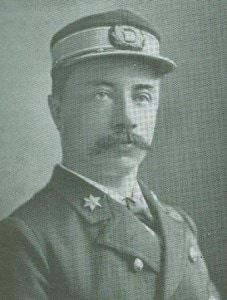
Frederik Hendrik (Frederick, Henry in translation*) Bonjer was born at sea on 16 April 1855 in location of 12o Northern Latitude and 23o Western Longitude. This is just South of the Cape Verdean Islands in the North Atlantic Ocean, off the coast of what is now called The Gambia. (*Also spelled as Frerich)
The name Bonjer is a German name and the family came originally from the Embden area in North West Germany. His grandfather Ulrich Bonjer settled down in Alblasserdam, in the Netherlands, during the reign of Koning Willem III (King William III) of the Netherlands. His official occupation was mate on a sailing ship. This being a very much a sea faring region it was not amazing that his son Eduard Frederik Bonjer (1827 – 1881) followed in his footsteps. He ended up as captain sailing in the period 1855 to 1881 for various owners in Amsterdam and Rotterdam. As he was mainly employed on service to the Dutch Colonies in the Far East, which entailed sailing around the Cape of Good Hope, the Cape Verdes were on the regular sailing route. Most sailing ships stopped there to load fresh water. Frederik Bonjer was born on one of these voyages. There was at least one another son and both decided to go to sea. He (Jacob Ulrich) ended up eventually as harbormaster in the Dutch East Indies (Makassar).
Frederik Hendrik joined the Holland Amerika Lijn (at that time officially called Nederlandsch-Amerikaansche Stoomvaart-Maatschappij or NASM) in May 1874 as a 3rd officer at the age of 19 years. 5 years later in November 1879 he was promoted to captain just being 24. As far as it can be ascertained, he has been the youngest deep sea captain who has ever sailed for the company.
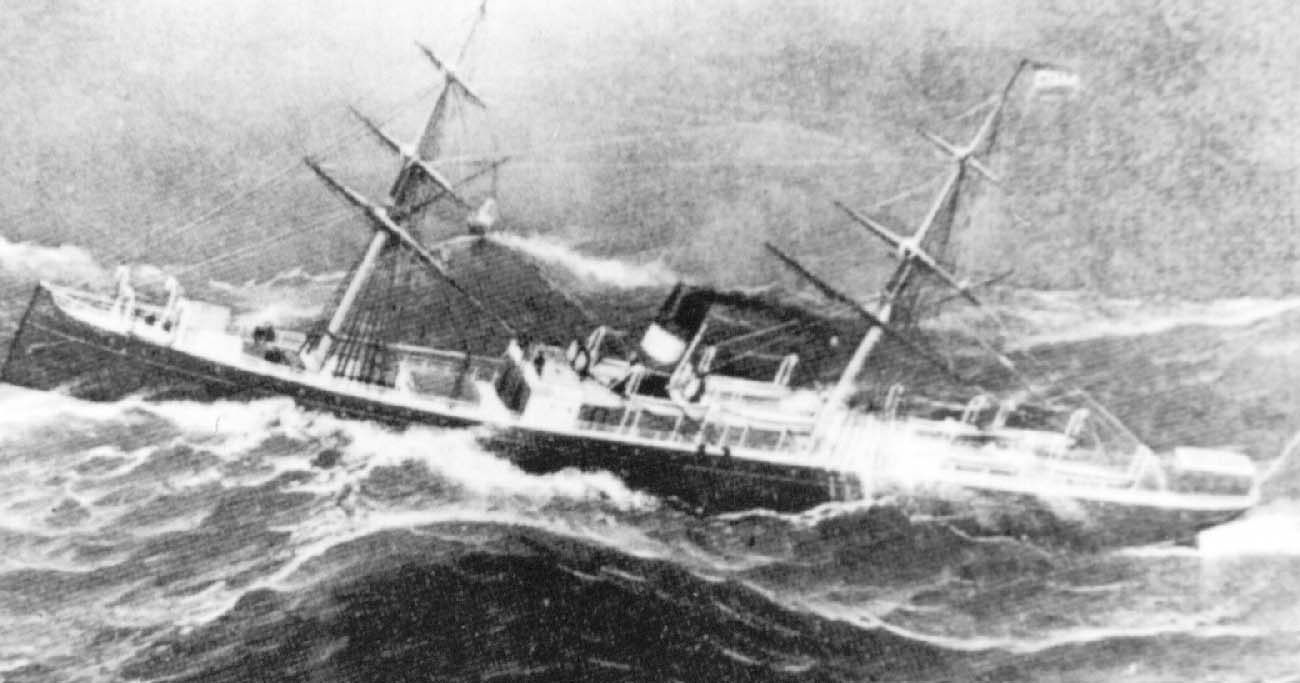
There were several reasons for this. Firstly, there were was still a great dearth of experienced captains who wanted to sail on steam ships. Steam was still new in the Dutch Merchant Marine and observed with certain of disdain by the conservative sailing society. Secondly, not every officer sailing had a Captains license. (At the time this was not yet a legal requirement. There had to be licenses on board but it did not have to be the captain who held one) However HAL required all his officers to have one. Lastly, with 5 years in this very young company, Bonjer was one of the most experienced officers “in the companies way of doing things”. So he ticked all the boxes and was thus given command. First temporarily but shortly after permanently. The reason that there was an opening for captain was the fact that the company was expanding and the routine had started to move the senior captain to the newer (larger) ship and fill the gap with a newly appointed captain on the (older) smaller ship. The company would keep this tradition until 1973 when the cargo ship side was sold off and the passenger ships went full time cruising. This seniority system caused all officers and captains to continuously hop from ship to ship, often including travel, when somewhere up the ladder a gap occurred, due to retirement, death, resignation, long term illness or fleet expansion.
Captain Bonjer’s portrait in 1890. Painted by F.H.F.C Nachtweh. (Collection of the Maritime Museum in Rotterdam.)
We see this pattern also very clearly with Captain Bonjer. After 1888 he is constantly changing ships. This becomes even more apparent in 1895, when as Commodore; he brings into service each new ship the company is commissioning.
In 1890 a most peculiar situation occurred which turned into a financial windfall. The USA government had decided that on 1 Oct of the year higher tariffs (import taxes) would be levied against the import of processed tobacco. This was a major export from the Netherlands and this protectionist measure caused great concern among the Dutch businessmen involved. Thus with great haste as much tobacco as possible was shipped to the States to avoid these higher import taxes. The Spaarndam was on a schedule (dept. 17 Sept.) that would see the arrival just inside the deadline. The Dutch business community offered Captain Bonjer a bonus of $ 5000,- if he would make it on time with the ship. He did and to the amazement of most, the bonus was indeed paid.
Photo taken from booklet issued to honor Captain Bonjer’s 100 voyage across the North Atlantic. (Capt. Albert Archive)
In 1893 he was the first captain who completed 100 hundred Trans Atlantic round trips for the company. As a result he was given the courtesy title of Commodore, denoting him as the senior captain of the company. This achievement was feted with a dinner and many speeches given by the company’s senior management. The new commodore was granted a special flag to fly, being the company flag with a golden star in the top left. This was flag officially hoisted in the presence of the management on 23 November. This also made the Spaarndam the first “flagship” of the fleet as it flew the commodore flag.
In 1894 the Dutch government created the position of Royal Netherlands Navy Reserve Officer, a function that already existed in other countries. By having merchant officers undergo training as a Royal Navy Officer would make it possible in time of war to keep requisitioned merchant ships under the command of the regular civilian captain. This would then keep the regular Royal Navy Officers available for the navy ships and warfare. In these years the passenger ships, being sometimes faster than the navy ships, were considered very useful as AMC’s (Armed Merchant Cruisers) and could so complement the navy ships on patrol. On 19 Sept. Captain Bonjer was the first captain who was appointed as Extraordinary Lieutenant First Class in the Royal Netherlands Navy. Most HAL captains after him, and certainly those on the fast passenger ships, held a similar commission. As Capt. Bonjer was the first, his Naval Reserve flag was hoisted on 3 Oct. 1894 for the first time officially in the presence of the company management and the highest Dutch naval officer, at the fantail of the Spaarndam.
In 1895 the famous cruise to the opening of the Kieler Kanal took place. This was a canal dug by the Germans between the Kielier Bight and the River Elbe. It saved shipping a great deal of time as the ships did not have to sail around Denmark any longer. The official name, until the end of World war I was the Kaiser Wilhelm Kanal after the man who also opened it. Later it became the Nord – Ost See Kanal but it is commonly called the Kieler Kanal. It turned out to be the first cruise ever for the HAL. The company sold this as an “Excursion” as they found that a cruise was more than just a quick visit with one only particular reason. On 17 June 1895 the Rotterdam (II) left Rotterdam under his command with on board 180 guests. Due to International politics; the Rotterdam was the first foreign ship to sail through the canal in procession behind the yacht Hohenzollern of the German Emperor. This came about as the Kingdom of the Netherlands was a neutral entity in the Greater European power play. Giving the honor to another country would have resulted in complaints of those countries feeling mistreated or not properly recognized. The Rotterdam was not the only passenger ship present at the opening (there were about 200) but by selecting a commercial vessel of a neutral country, the emperor avoided all sorts of international issues.
This excursion was considered such a success and an event of importance that a brass medallion was minted to commemorate the visit.
Obverse: Port broadside view of the four-masted steamer ‘Rotterdam’ with a tug alongside; above, a semi-circular band bearing (centre) the German eagle crowned, and decorated with the arms of ‘ROTTERDAM’, ‘KOPENHAGEN’, ‘KIEL’ and ‘HELGOLAND’; below, the arms of Holland, crowned, with supporters.
On a band the inscription: ‘HET SS ROTTERDAM KAPT. F. H. BONJER KNMR : PASS . NA DE SLUITSTEENLEGGING TEERST ZONDER EENIG BEZWAAR HET KAISER WILHELM-KANAAL.’
(The SS ‘Rotterdam’, Capt F.H. Bonjer K.N.M.R. [Capt. Royal Netherlands Naval Reserve] after the laying of the keystone, the first to pass the Kaiser Wilhelm Canal without any difficulty.) Excursie: ’22-23 JUNI 1895 N . A . S . M . EXCURSIE KIEL 15-25 JUNI 1895.’ (Excursion to Kiel 16-25 June 1895.)
Reverse: A fleet of battleships at anchor in harbour; above, a hand holding a palm branch issuing from a cloud, with sun rays, supporting a coat of arms and a ribbon composed of the flags of several nations. A map of the canal flanked by heraldic shields is shown below.
In 1898 Captain Bonjer, while in command of the Rotterdam (III) was instrumental in the saving of some of the crew of the French Liner “La Champagne”. On 15 February of that year that ship experienced problems with a broken propeller shaft. It had dropped anchor on the Terra Neuve bank . The first officer Mr. Georges Unsworth and 9 crew volunteered to sail and row away from the ship to see if help could be raised. By following the projected course of the mother ship, they expected to sight other ships in due course. On 24 Feb. The boat was noticed by the crew of the ss Rotterdam and all were taken on board, suffering from intense cold and in some cases frost bite. All were delivered safely to New York. The “La Champagne” was later towed to Halifax by the English steamer ss “Roman”. As a token of appreciation the captain received a silver, candle lit, tea pot on warming up stand (Now in the collection of the Maritime Museum of Rotterdam)The first officer of the “La champagne” was appointed as a officer in the Legion d’Honneur and his boat crew all received a monetary gift.(b)
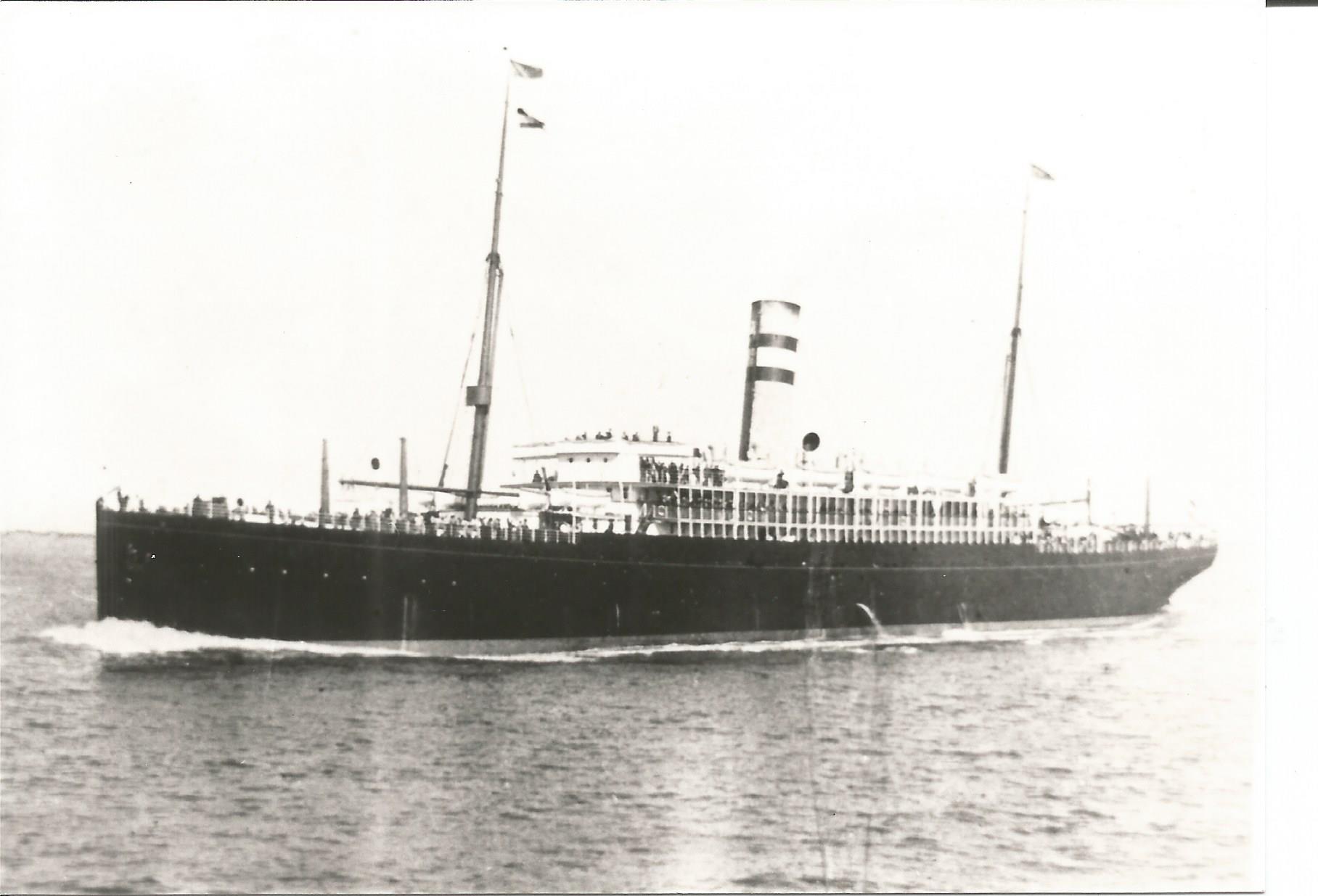
Although he was wellknown and much praised for his navigation skills, also he could not win from the obstacles that the New Waterway was forever throwing at the ships of the HAL. On 29 Nov. 1899, the Statendam grounded off Maassluis due to a newly developed sandbank. The ship had to be lightened until its draft was sufficiently lessened to become free from this obstacle. Since the New Waterway had been dug in the years around 1871, its depth had forever been a concern for the company. It was prone to silting and although dredging was taking place on a regular basis, the Dutch Government could not always keep up with the Holland America line who was forever ordering larger ships with deeper drafts. The Statendam, being its newest ship (commissioned in 1898) with again a deeper draft, was the latest victim of this problem. Although the grounding was not the fault of the captain, it must have been very frustrating for him, as there was nothing he could have done about it. (b)
Just before on 26 Sept 1899 the ship had been inspected in Rotterdam by Her Majesty Queen Wilhelmina and Queen Emma, the Queen mother. On arrival at the ship, he was introduced to them and his two small daughters presented each Queen with a bouquet. Then the royal entourage inspected the whole ship which was at that time the largest ship in the Dutch Merchant Fleet and one of the 12 largest passenger ships in the world.(b)
Somewhere in this period he became a Knight in the Order of Orange Nassau. Please note that the Dutch system of medals and recognition is different than the better known British system and a Dutch person appointed as knight is not the same as an English Knighthood. (While in England it goes from Member, to Officer, to Commander to Knight; MBE, OBE, CBE, KBE, in the Netherlands an Officer and a Commander is higher ranking than a knight)
This frequently taking out of new ships, as mentioned above, did not go unnoticed by people outside the company. On 29 March 1902 he received a silver tea tray presented to him by Harland and Wolff shipyard in Belfast. This to recognize his yard supervision of the passenger ships Rotterdam (II), Statendam (I), Ryndam (I) and Noordam (I). (This tray is now in the collection of the Maritime Museum in Rotterdam)
In 1905 the then time President Director wrote a memo for his fellow directors with an overview of who was sailing where and how he thought about the various captains.
Bonjer is onze “Senior Captain” [later title: Commodore], hoezeer nog jong [geb. 16 Apr. 1855], is uitmuntend navigateur, vol toewijding en onbetwist een ander type dan de rest. Hij heeft enkele eigenaardigheden die hem moeilijk maken in den omgang, is o.a. wat koppig maar overigens iemand die ontzachelijk veel goeds heeft.
Translation: Bonjer is our Senior Captain (later Commodore), although very young (born 16 Apr. 1855) he is an eminent navigator, very dedicated and without discussion a different sort of man then the rest. He has some peculiarities which make it difficult to deal with him, e.g. a bit stubborn but for the rest somebody who has an incredible amount of good in him.
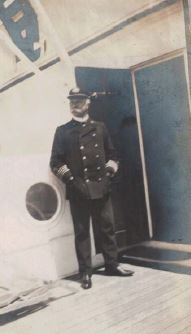
Commodore / Captain F. Bonjer seen here in 1907. (Photo courtesy Mr. Doug Wilson)
On 3 September 1907 it was announced that he had completed his 200th. Trans Atlantic round voyage for the company. This accomplishment was celebrated on board the ss Nieuw Amsterdam in the presence of fellow captains and senior officers of the other HAL ships present in the port of Rotterdam and senior shore side personnel. He was honored by the company management with a special made medal to commemorate this achievement and was given a painting, showing the Nieuw Amsterdam entering the Nieuwe Waterweg. (Painted by Dh. Van Dommelshuyzen, whereabouts of both medal and painting currently unknown)
In May 1908 he was given command of the newest ship of the company, the ss Rotterdam (IV). He now had the distinction to have sailed on three Rotterdam’s in his career. The ss Rotterdam (IV) as again the largest ship of the company and also the largest ship in the Dutch merchant fleet.
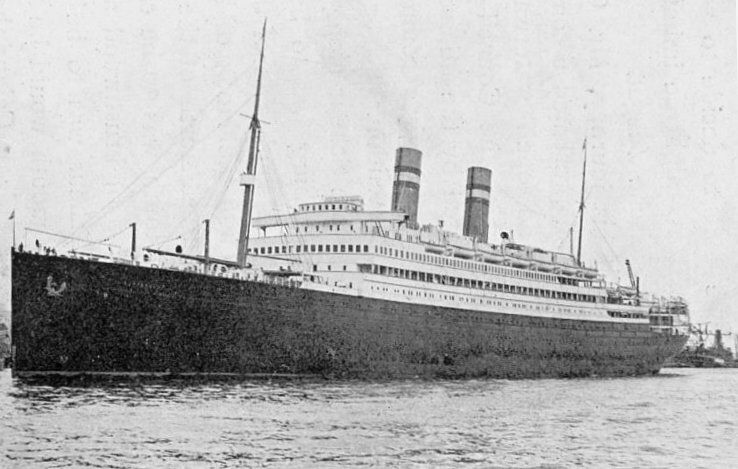
In July 1909 he has to resign due to illness after having completed 210 roundtrips for the company. 8 months later, on 26 Feb. 1910 Captain Bonjer passed away. He was 55 years old and had sailed 35 years for the company. He left behind a wife and two sons. (Mrs. Johanna Nicolasina, Hubertina, Bonjer-Fraikin and Mstr. E.F Bonjer & Mstr. J.H Bonjer)
He was buried on 3 March 1910 at 3 pm. at the General Cemetery “Crooswijk” in Rotterdam. Present were the full management of the company, many company officers and a large number of other interested people. 15 flower arrangements covered the coffin. Mr. Wierdsma, President Director, commemorated the many achievements of the captain and noted the many messages received from overseas.
Recognitions:
1878 recognized for services to the Royal Dutch Meteorological Institute.
1886 recognized for services to the Royal Dutch Meteorological Institute.
1898 silver medal for services to the Royal Dutch Meteorological Institute.
1898 appointed member of the Dutch Geographical Society.
1905 temporary appointed Inspector of Shipping in the Port of Rotterdam.
1907 appointed member for the commission for awarding the newly created Honor of the “De Ruyter medal”. (This turned into being the highest, NOT Royalty awarded recognition available for people in the Dutch Maritime Industry. It is still handed out)
Listing of ship assignments and sailing dates(a):
Officers were assigned to a ship until transferred. There was no regular leave as they were given time off when the ship was in turn-around in the home port. This normally took a week to 14 days, which made it a 6 weeks on and 2 weeks off rotation; including the time in New York. (Which meant some time off as well)
The number after the ships name indicates the monthly wage. It has to be noted that Captain Bonjer did not get a pay raise between 1882 and 1909. It was the company policy only to give pay rises if there was the acute danger of officers leaving the company and situations were gaps could not be filled until the payroll was reviewed and brought in line with the demands of the labor market.
Date: Function: Ship: Wages and/or remarks.
May 1874 3rd officer Maas 40,–
May 1875 2nd officer Maas 60,–
Obtained master license in 1877
June 1877 1st officer Maas 90,–
Nov 1879 Captain Maas 200,– Acting. Later in the year permanent
17 May 1882 Captain P.C. Caland 250,–
30 Apr. 1888 Handed over the P.C Caland to Captain Potjer in New York and returns on 2 May 1888 per ss Trave (North German Lloyd) to Rotterdam.
11 May 1888 Captain Amsterdam Returns on 13 Oct. with the Umbria (Cunard) from New York to Rotterdam to transfer to Veendam)
23 Oct. 1888 Captain Veendam
26 Jun. 1889 Captain Maasdam, Bought by the company on June 15th. and over saw a refit at the yard of its British Builder.
16 Dec. 1889 Captain Werkendam Collects the ship in England and sails to Rotterdam
22 Dec. 1889 Captain Maasdam
Sails from Vlissingen to Liverpool to collect the Spaarndam
10 Feb. 1890 Captain Spaarndam, Collects the ship at Liverpool and sails to London. Leaves from London on 15 Feb.
30 Nov. 1893 On leave until Jan. 1894
06 Jan. 1894 Captain Spaarndam
02 Jun. 1895 Captain Rotterdam Includes the excursion/cruise to the opening of the Kieler Kanal. First cruise ever for the company.
07 Jul. 1895 Captain Spaarndam
06 Nov. 1896 Removed from command at New York to give a disposition. Leaves on 14 November per ss Canada from Montreal for Liverpool and to Rotterdam where he arrives on 23 Nov.
13 Feb. 1897 Sails to Belfast for construction of the new ss Rotterdam
18 Aug. 1897 Captain Rotterdam
29 Dec. 1898 Assigned to the newbuilding of the ss Statendam at Belfast.
25 Aug. 1898 Captain Statendam
17 Jan. 1900 Released from command and put on standby,
01 Feb. 1900 Travels to Hamburg for the building of the ss Potsdam
04 May 1900 Captain Potsdam
23 Jun. 1901 Travels to Belfast for the construction of the ss Rijndam
23 Oct. 1901 Captain Rijndam
21 Feb. 1902 Travels to Belfast for the construction of the ss Noordam.
15 Apr. 1902 Captain Noordam
16 Nov. 1904 Captain Statendam
21 Dec. 1904 Captain Noordam
13 Dec. 1905 On leave and on standby for next ship.
06 Jan. 1906 Travels to Belfast for the construction of the ss Nieuw Amsterdam
06 Jan. 1906 Captain Nieuw Amsterdam
12 Mar. 1908 Captain Rijndam
2 May 1908 Travels to Belfast for the construction of the ss Rotterdam.
21 Jul. 1909 Remains behind in Holland due to illness and requests an “honorable discharge”.
Sources:
- (a) Mustering books held in the HAL archives in Rotterdam
- (b)News articles from various Dutch newspapers and the New York times.
- Capt. Albert Schoonderbeek archive. (photos and commemorative booklet “Commodore 1893”)
- Additional info by Laurens van der Laan, Hal historian.
Last update: 28 Jan. 2025
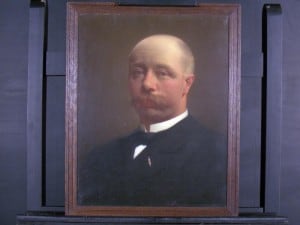
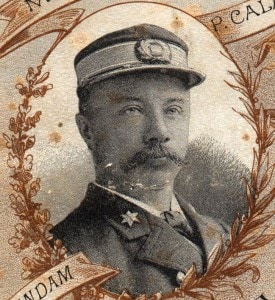
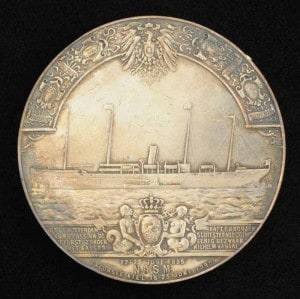
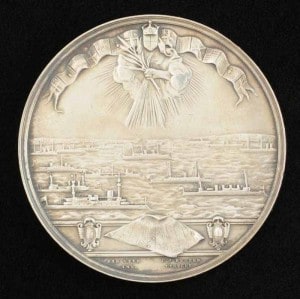

April 12, 2014 at 8:09 pm
I am looking the list of my family how arribe in Veracruz mexico in april 7 1926 please send me were can I find it. they travel in the SPARRDAM.
April 21, 2014 at 5:12 pm
Good morning,
most passenger lists are kept in the HAL archives which are kept at the “Gemeente Archief” in Rotterdam. If you google
Gemeente Archief Rotterdam, then their webpage comes up and there is also an English section. They might be able to help.
they will need to know the Last name of your family –exactly how it was spelled in the passport, the name of the ship SPAARDAM and the departure date from Rotterdam, or from Vigo or Lisbon in case they boarded there.
I hope this helps.
Captain Albert
April 23, 2014 at 10:40 am
i have the medallion in the same with the image what do you post..i live in indonesia now.,this really and not bullshit…i have the medallion..if do you wont to see the medallion that i have..maybe you can call me or email..maybe you can reply this comment whit my email..please reply this comment as soon as possible..because this medallion..already many people to buy..thank you
August 8, 2018 at 5:06 am
erratum ??
At opening Kielerkanaal kapitein Bonjer was in command of “Rotterdam”(2).
addition ??
Kapitein Bonjer, first merchant captain to be assigned Luitenant ter Zee KMR.
http://maritiemdigitaal.nl/index.cfm?event=search.getdetail&id=120103543
MVG
August 8, 2018 at 8:25 am
Thank you I will make the correction.
I sometimes get confused with the Rotterdam’s as it was renamed in Edam and then nbr. three came in 1897
Captain Bonjer was indeed the first royal marine reserve officer, appointed when the Marine Reserve was created in 1893.
It is in the narration. He was the first for HAL and the first for the Royal Navy.
Best regards and thank you
Capt. Albert
January 9, 2022 at 8:48 am
Heel leuk te lezen over mijn voorvaderen van de fam Bonjer mijn oma was judith Bonjer en geboren te embden
Wij hebben bij de HAL inlichtingen gevraagd over kapitein Bonjer maar hebben die niet gekregen
We zijn daarom heel blij iets meer gelezen te hebben mijn overgroot vader was Hendrik weber Bonjer